Bhutan Travel Tips
With the awesome scenery, charming people, and undiluted religious cultures, Bhutan has been a popular destination for visitors from all over the world, Especially Buddhists. If you plan on traveling to this mystery kingdom, there are important things you should know before you go. Please read top travel tips below for your first trip to Bhutan.
Obtain A Bhutan Visa
The most important thing to consider before traveling to Bhutan is the visa. Most countries in the world have not established formal diplomatic relations with the Kingdom of Bhutan. As a foreign traveler, you have two choices in obtaining a visa to Bhutan: You can go to India, Nepal, or another country that has established a mutual relationship of embassies to obtain a visa to Bhutan. However, there are provisions for Bhutan airlines that people must have a visa to buy flight tickets to the country. When you get a visa, there might not be any tickets left, so this is often not the best choice. The better option is to find a professional travel agency that will help you apply for your Bhutan visa in advance. All you need is a passport photo, and we can help you get your visa in about 7 days. As long as you hold a copy of your Bhutan visa, you may enter the country.
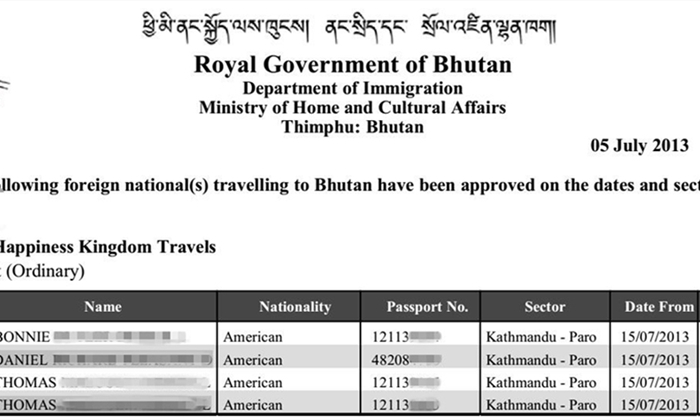
Best Time to Visit Bhutan
Bhutan is a country of generally warm and temperate weather, and wide-spread locations rich in heritage cultural significance. There is never a dull or bad time to visit. You will enjoy rewarding experiences throughout the land all the time. For those who enjoy mostly trekking and natural scenery of the Himalayan peaks then you should try Spring (March thru May) and Fall (September thru November). The major Bhutanese religious festivals Tshechus and Dromchoes are also held taking advantage of the dry and clear Spring and Autumn weather.
How to Behave in Bhutan
When traveling in Bhutan, men are expected not walk around bare-chested, while shorts are acceptable, long pants are considered better. Women are recommended to wear long skirts. Buddhism is very important to the Bhutanese, so avoid making negative comments regarding religion or the Royal Family. Bargaining is not typical in Bhutan, the Bhutanese don't like discussing prices, so getting a deal can be difficult. When visiting a Dzong or Temple: It is customary to remove one's shoes and hat upon entering the important rooms of a temple. It is acceptable to take photos in the courtyard but not inside the temple.
Food and Drink
Most Bhutanese food is similar to Indian food, and it is extremely spicy. Chiles are not necessarily "added" to the dish; rather, they are simply part of the entire dish. Food in Bhutan has been strongly influenced by China, Tibet, and India, but it does have its own unique taste and character. There are many natural options here; local vegetables and other foods are grown without pesticides, and there is almost no environmental pollution in the country. Generally, Local travel agencies provide a buffet of sorts, with six or more food options to choose from. You will see beef, pork, fish, and seasonal vegetables. Red Panda Weissbier is a very flavorful beer popular among Bhutanese residents. One common local tea is 'ngad-ja'. This is served Indian style (sweet and milky). Coffee is served here, but it is usually instant.
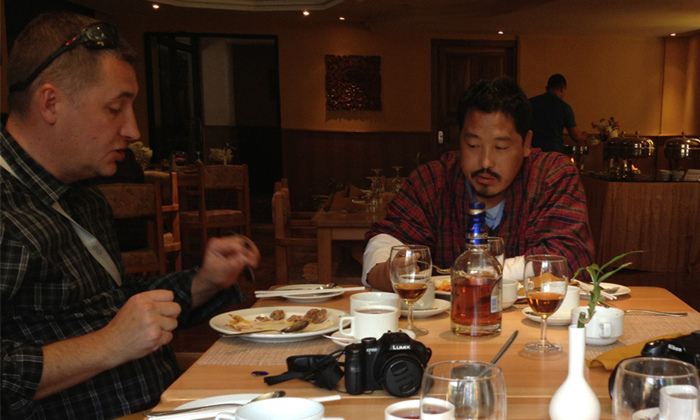
Airport and Customs
The only international airport in the small country of Bhutan is Paro Airport. Nestled in the Himalayas, it is considered one of the world's most challenging airports. Visitors are allowed to bring personal items and one bottle of alcohol free of customs duties and taxes. If you plan on bringing dutiable goods into the country, you need to declare this in the passenger declaration forms. The sale of tobacco products in the country is prohibited. Travelers are allowed to pack one carton of 200 cigarettes for their own personal use, but this will be subject to a tax of 200%.
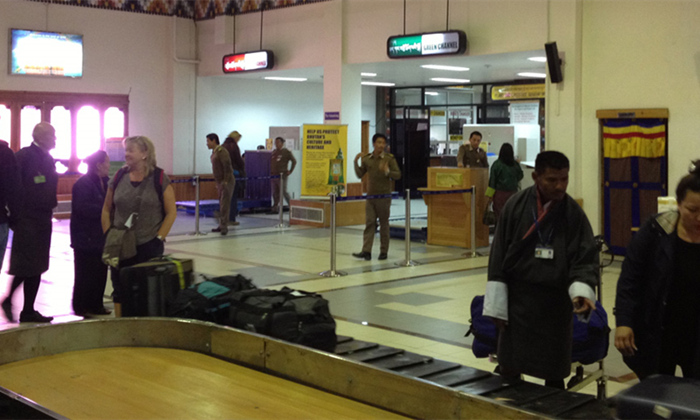
Getting to Bhutan
Bhutan has one international airport, Paro Airport, and two airlines, Druk Air (government-owned) and Bhutan Airlines (privately owned). Only these two airlines operate international flights to the country, as it takes specialized pilots and airplanes to land on a runway so short and so high in the mountains. The schedules for Druk Air and Bhutan Airlines flights vary by season, but there are usually a number of flights each week from Kathmandu, New Delhi, Singapore and Bangkok. These flights are either direct or go through Dhaka, Kolkata or Bagdogra depending on the day of travel. An easy option for you is to fly into Bangkok on Thai Airways or take a connecting flight on JAL, Korean, United, All Nippon, Air China, Asiana, Singapore, China, Eva and Cathay Pacific.
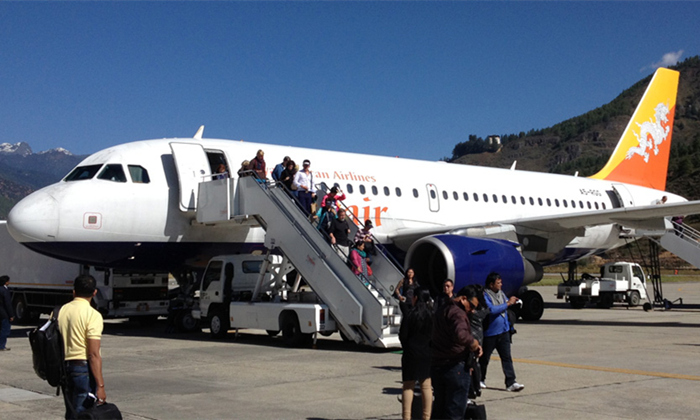
Money Matters in Bhutan
Bhutan's unit of currency is the Ngultrum (Nu.). A ngultrum has equal value to the Indian rupee, which is also used in Bhutan. Visitors can exchange cash and travelers' cheques at the foreign exchange desk in Paro Airport and at Bank of Bhutan branches in major cities like Paro and Thimphu. Some hotels offer exchange services, but many are restricted to US Dollar exchanges. When traveling outside of the cities, you will scarcely find any banks or even ATMs. Even in major towns, the ATM services are limited. Credit cards are accepted only in specialty stores in Thimphu and in high-end hotels. International MasterCard and Visa credit and debit cards can be used to withdraw cash at many of the limited ATMs in the country.
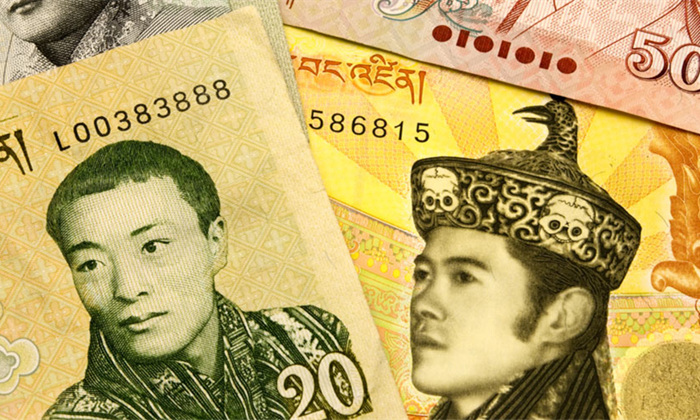
Vehicle & Hotels
Vehicles used for tourism in Bhutan are primarily Japanese and Korean makes. The biggest used is the 20 seats Toyota Coaster Minibus. In addition, the Toyota Prado and other similar sport utility vehicles are used, and in these the passengers will get nice and cozy. Hotels in Bhutan can be smaller than what you have seen before, but do not worry; the rooms are relatively large and are filled with the things you need. They are well constructed and built in a way so as to give you a good view of the surrounding scenery. Some hotels in Bhutan provide a breakfast, and the quality is usually very good. Common sights at breakfast include black tea, bread, and milk. Hotels in Bhutan are generally divided into three classifications:
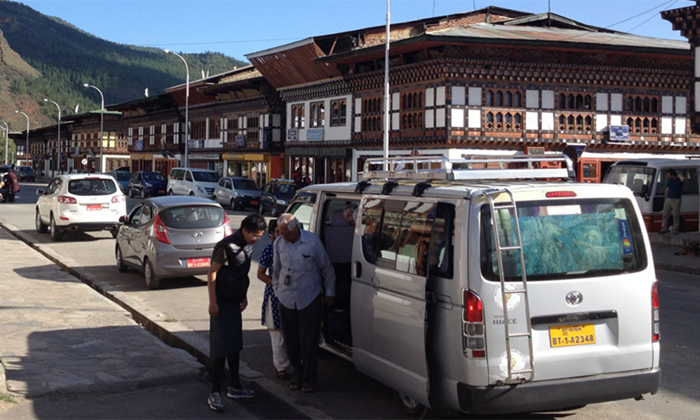
5-Star luxury hotels: These are lavishly designed and provide the maximum in comfort. There are few in the country, and the price may be $600 or more per night.
3-4 Star hotels: Most foreign tourists of Bhutan choose to stay in these.
Under 3-Star hotels: These are cheap, but they are not recommended for most visitors from the US; they are geared more for tourists from Indian, Bhutan, and Nepal.
With the awesome scenery, charming people, and undiluted religious cultures, Bhutan has been a popular destination for visitors from all over the world, Especially Buddhists. If you plan on traveling to this mystery kingdom, there are important things you should know before you go. Please read top travel tips below for your first trip to Bhutan.
Obtain A Bhutan Visa
The most important thing to consider before traveling to Bhutan is the visa. Most countries in the world have not established formal diplomatic relations with the Kingdom of Bhutan. As a foreign traveler, you have two choices in obtaining a visa to Bhutan: You can go to India, Nepal, or another country that has established a mutual relationship of embassies to obtain a visa to Bhutan. However, there are provisions for Bhutan airlines that people must have a visa to buy flight tickets to the country. When you get a visa, there might not be any tickets left, so this is often not the best choice. The better option is to find a professional travel agency that will help you apply for your Bhutan visa in advance. All you need is a passport photo, and we can help you get your visa in about 7 days. As long as you hold a copy of your Bhutan visa, you may enter the country.

Best Time to Visit Bhutan
Bhutan is a country of generally warm and temperate weather, and wide-spread locations rich in heritage cultural significance. There is never a dull or bad time to visit. You will enjoy rewarding experiences throughout the land all the time. For those who enjoy mostly trekking and natural scenery of the Himalayan peaks then you should try Spring (March thru May) and Fall (September thru November). The major Bhutanese religious festivals Tshechus and Dromchoes are also held taking advantage of the dry and clear Spring and Autumn weather.
How to Behave in Bhutan
When traveling in Bhutan, men are expected not walk around bare-chested, while shorts are acceptable, long pants are considered better. Women are recommended to wear long skirts. Buddhism is very important to the Bhutanese, so avoid making negative comments regarding religion or the Royal Family. Bargaining is not typical in Bhutan, the Bhutanese don't like discussing prices, so getting a deal can be difficult. When visiting a Dzong or Temple: It is customary to remove one's shoes and hat upon entering the important rooms of a temple. It is acceptable to take photos in the courtyard but not inside the temple.
Food and Drink
Most Bhutanese food is similar to Indian food, and it is extremely spicy. Chiles are not necessarily "added" to the dish; rather, they are simply part of the entire dish. Food in Bhutan has been strongly influenced by China, Tibet, and India, but it does have its own unique taste and character. There are many natural options here; local vegetables and other foods are grown without pesticides, and there is almost no environmental pollution in the country. Generally, Local travel agencies provide a buffet of sorts, with six or more food options to choose from. You will see beef, pork, fish, and seasonal vegetables. Red Panda Weissbier is a very flavorful beer popular among Bhutanese residents. One common local tea is 'ngad-ja'. This is served Indian style (sweet and milky). Coffee is served here, but it is usually instant.

Airport and Customs
The only international airport in the small country of Bhutan is Paro Airport. Nestled in the Himalayas, it is considered one of the world's most challenging airports. Visitors are allowed to bring personal items and one bottle of alcohol free of customs duties and taxes. If you plan on bringing dutiable goods into the country, you need to declare this in the passenger declaration forms. The sale of tobacco products in the country is prohibited. Travelers are allowed to pack one carton of 200 cigarettes for their own personal use, but this will be subject to a tax of 200%.

Getting to Bhutan
Bhutan has one international airport, Paro Airport, and two airlines, Druk Air (government-owned) and Bhutan Airlines (privately owned). Only these two airlines operate international flights to the country, as it takes specialized pilots and airplanes to land on a runway so short and so high in the mountains. The schedules for Druk Air and Bhutan Airlines flights vary by season, but there are usually a number of flights each week from Kathmandu, New Delhi, Singapore and Bangkok. These flights are either direct or go through Dhaka, Kolkata or Bagdogra depending on the day of travel. An easy option for you is to fly into Bangkok on Thai Airways or take a connecting flight on JAL, Korean, United, All Nippon, Air China, Asiana, Singapore, China, Eva and Cathay Pacific.

Money Matters in Bhutan
Bhutan's unit of currency is the Ngultrum (Nu.). A ngultrum has equal value to the Indian rupee, which is also used in Bhutan. Visitors can exchange cash and travelers' cheques at the foreign exchange desk in Paro Airport and at Bank of Bhutan branches in major cities like Paro and Thimphu. Some hotels offer exchange services, but many are restricted to US Dollar exchanges. When traveling outside of the cities, you will scarcely find any banks or even ATMs. Even in major towns, the ATM services are limited. Credit cards are accepted only in specialty stores in Thimphu and in high-end hotels. International MasterCard and Visa credit and debit cards can be used to withdraw cash at many of the limited ATMs in the country.

Vehicle & Hotels
Vehicles used for tourism in Bhutan are primarily Japanese and Korean makes. The biggest used is the 20 seats Toyota Coaster Minibus. In addition, the Toyota Prado and other similar sport utility vehicles are used, and in these the passengers will get nice and cozy. Hotels in Bhutan can be smaller than what you have seen before, but do not worry; the rooms are relatively large and are filled with the things you need. They are well constructed and built in a way so as to give you a good view of the surrounding scenery. Some hotels in Bhutan provide a breakfast, and the quality is usually very good. Common sights at breakfast include black tea, bread, and milk. Hotels in Bhutan are generally divided into three classifications:

5-Star luxury hotels: These are lavishly designed and provide the maximum in comfort. There are few in the country, and the price may be $600 or more per night.
3-4 Star hotels: Most foreign tourists of Bhutan choose to stay in these.
Under 3-Star hotels: These are cheap, but they are not recommended for most visitors from the US; they are geared more for tourists from Indian, Bhutan, and Nepal.
Related Articles You May Like
Most Frequently Asked Questions
Japan Office
- Tel: +81 50-3701-6391
- Email: info@japanholiday.com
- Working Hours: 8am-7pm, (Japan)
USA Office
- Tel: +1-6265617117
- Email: info@japanholiday.com
- Working Hours: 8am-7pm, Pacific Time

